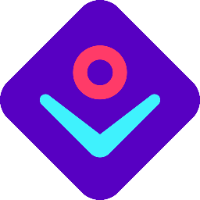Administrator: All platform roles with permissions higher than “Learner” can be called administrators because they administer courses, edit them, or add content. This is not an official platform role but merely a collective term.
atingi: atingi means ‘to achieve something’ in the language Esperanto. The digital learning platform provides free access to high-quality digital learning worldwide.
Authoring tool: Authoring tools allow to create responsive learning content that can be integrated to courses on atingi.
Activity: An activity can be added to your course and is any task that requires learners to interact somehow – e.g. choose an answer in a quiz, contribute by typing into a forum, etc.
Badge: Learners can receive bagdes that celebrate their progress based on pre-defined criteria. All badges are being send to the learners via e-mail.
Blocks: Blocks are elements which add extra information or content to your course. They are shown on the right or left side on your course and can be moved to different positions. For example, badges, activities, or a calendar can be added as a block.
Category: A category is the “room” – or better: “department” – where your courses can be found. The overarching categories are defined by the atingi team according to specific criteria. Within your category you can set up sub-categories and courses.
Certificate: Certificates offer personalised proof for the completion of a course on atingi. There are different certificate templates, but it’s also possible to build custom certificates.
Completion: Completion on atingi is not restricted to finishing a whole course but can be defined for each activity or resource. Whenever the learner receives a certificate, this means the whole course has been completed as well.
Course: Just like in an actual teaching environment, a course on atingi consists of a topic, as well as different learning materials and activities that are set up by the “teacher”.
Enrolment: There are different ways to allow learners access to your courses. Enrolment can for example be done by you or directly by the learners.
Learner: A learner is any person registered on atingi. Learners can’t add or edit courses but can only access courses and activities that have been made available to them.
Module: Modules are different (mostly thematic) parts of a course.
Non-public: Not all courses on atingi are available to any registered user. Some courses are only meant for a specific group of participants. Course administrators need to manually enrol or invite learners to give them access to the course.
Open-Link: Courses that are published in “Open-Link” format allow for self-enrolment via a link that has been shared with the potential participants. However, those courses can’t be found in the public overview of all courses or via the global search.
Partner: To be able to publish courses on the atingi platform, you need to become a partner of atingi. Please reach out to help@atingi.org to start your partner journey.
Public: We call some courses on atingi “public” because they allow the self-enrolment of learners and are displayed in atingi’s overview of all courses”. Of course, the learners also need to be registered on atingi to enrol in public courses.
Quality Assurance: Every course that is published on atingi is being quality assured by our team. We share our quality criteria early on and the implementing project or organisation is responsible for meeting them.
Report: Just like in a class, atingi offers you overviews on your learners’ activities, grades, and progress.
Resource: Can be added to your course and is typically contains information, like the ‘book’ and ‘file’ items, which learners consume without being active themselves.
Role: Every user on atingi has a role, which equips the user-account with certain rights and permissions. When first entering atingi, everyone is assigned the role of “learner”. If you are setting up a course, you will be assigned a different role according to the part you play in your project.
Section: Courses can be divided into sections (or modules) to organize resources and activities for students. Each section can have a description and can contain many activities and resources.
